Maria Montessori began developing her Educational Method at the beginning of the 20th century. In general terms, the method is a scientific pedagogy that promotes an education that positively contributes to the development of children’s brains, respecting their individuality and stimulating their autonomy, self-esteem, and self-confidence.
The three pillars on which the method has been based are: “The child, the Conscious Adult, and the Prepared Environment“. They should always be together, connected.
When designing a Montessori Environment at Home, it is recommended to take into account the following features:
- Simplicity: Children don’t need much. It is recommended to prioritize light colors and natural light;
- Minimalism: It is recommended to select very few options and facilitate the development of decision-making skills;
- Organization: The external organization of the environments has an internal connection with the child which is fundamental for her/his growth and internal peace;
- Accessibility: Children can move easily and interact in space without the intervention of an adult;
- Safety: A well-prepared environment must be explorable safely;
- Silence: It is recommended to create a quiet environment without electronic devices where children can develop physical autonomy and emotional autonomy, as well as concentration.
SIMPLIFYING YOUR HOME
Simplifying your home environment enables your child to understand what is expected of her/him:
- With your support;
- Encouragement;
- Consistent;
- Gentle reminders
Even toddlers are capable of returning items to their rightful places.
For example:
Limiting toy choices and providing open shelves (instead of toy boxes where toys are heaped in a pile) at your child’s eye level allows her/him to see all of her/his choices and return objects to their correct places.
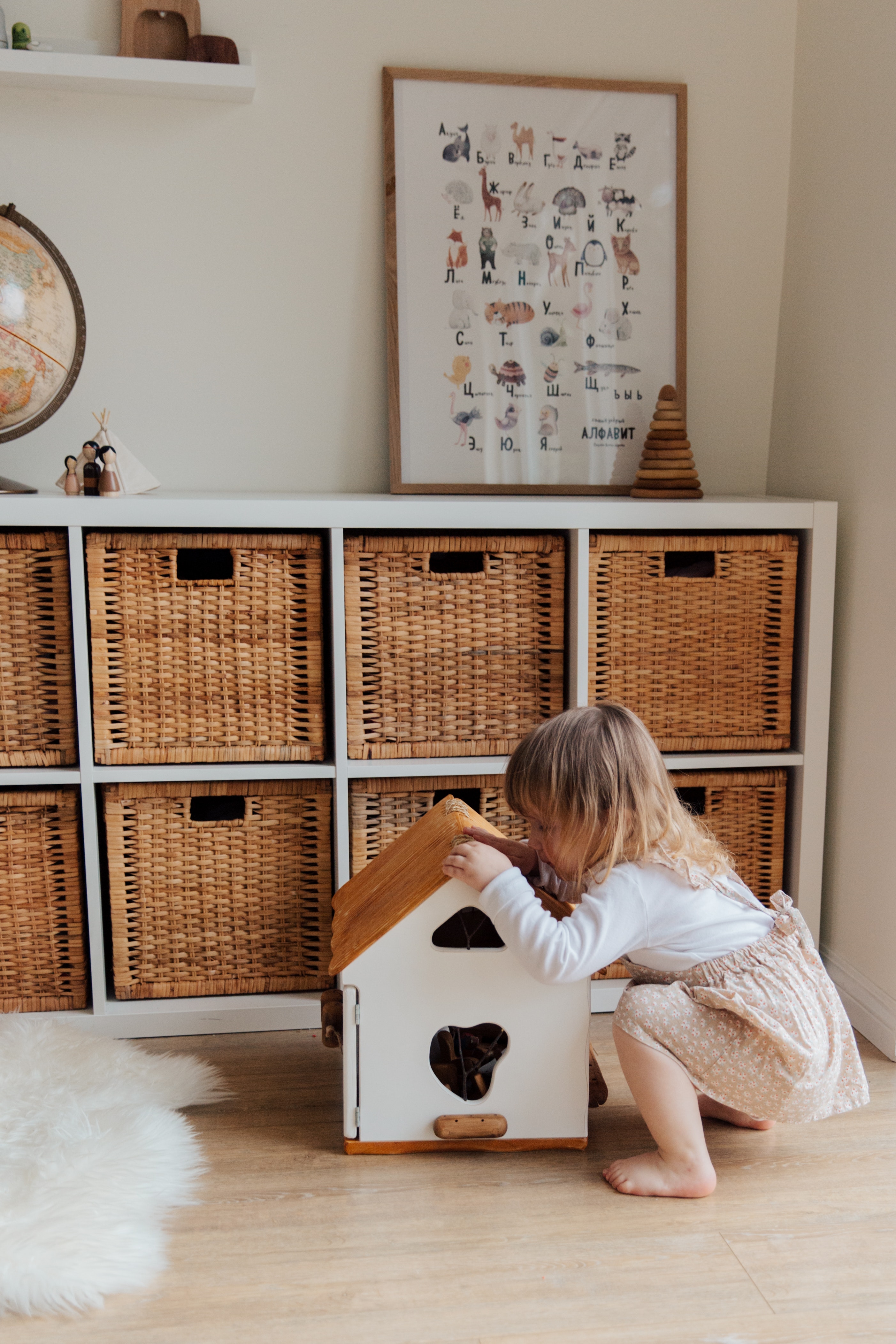
THE BEDROOMS
Bedrooms for children of all ages should be free of clutter with clearly designed places for:
- Rest;
- Self-care;
- Dressing.
To nurture independence and self-esteem, furniture for young ones should be:
- Child-sized
- Accessible
For example
- A closet with low-hanging clothes;
- Limited choices will enable your child to make her/his own clothing choices for the day and put away clothes independently;
- Setting the stage for maintaining tidiness and organization later on.
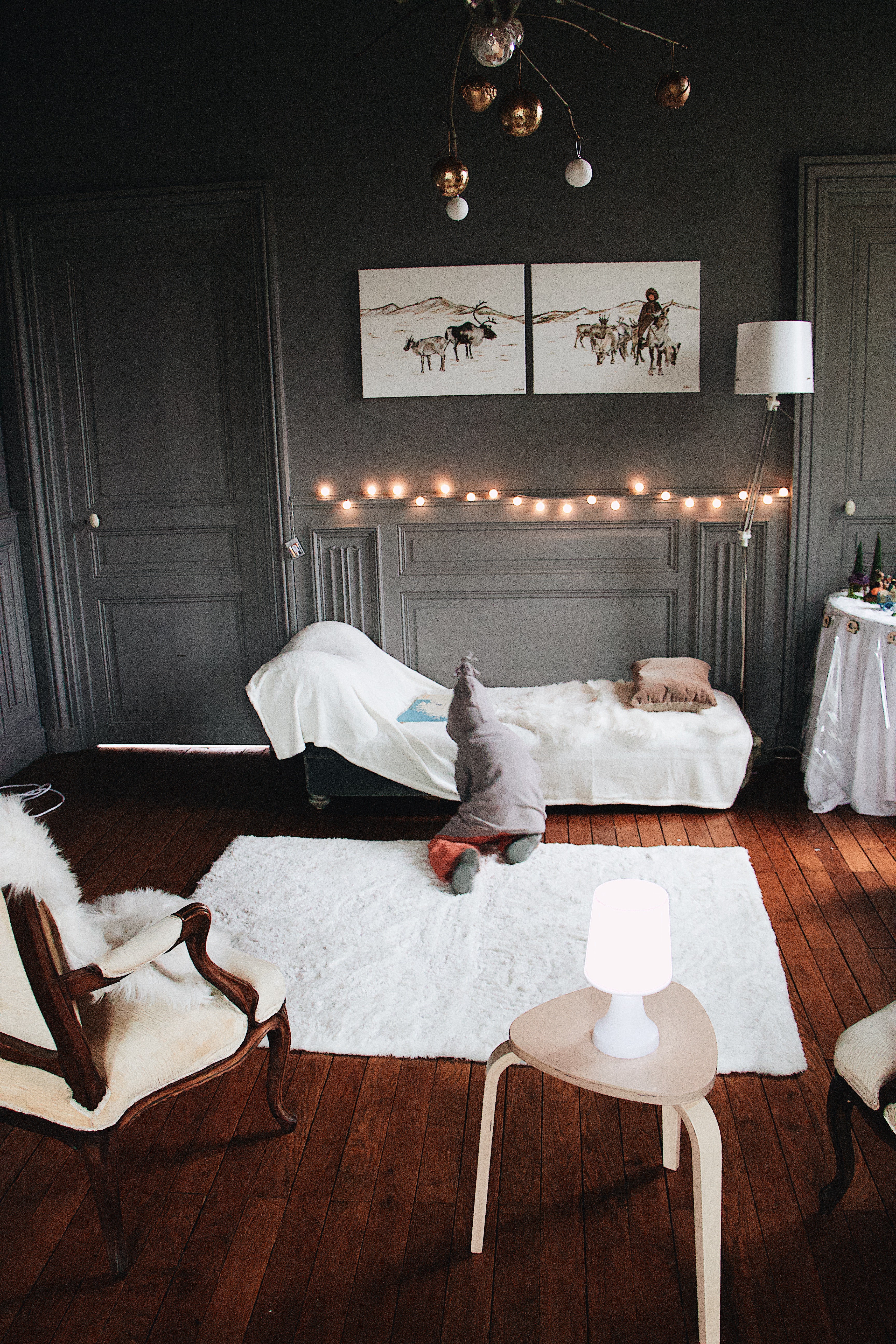
All areas of the bedroom should provide opportunities for:
- Clutter control to reinforce the value of organization;
- Care of the environment;
- Your child should be fully responsible for maintaining tidiness in her/his own space.
Particularly when your child is older and is responsible for completing independent reading or homework at home, her/his workspace should provide a clutter- and distraction-free workspace for focused concentration.
THE KITCHEN
Welcoming young children into the kitchen is one of the easiest ways to support your child’s growing independence at home:
- Groceries can be placed on low;
- Easy-to-reach shelves;
- So your child can make choices;
A stool placed near the countertop will invite:
- Consider a table and chairs that are child-sized;
- So that your young one can take part in meal preparation;
- Sit confortably for snaks;
- Clean up easily
Consider using quality silverware, dish-ware, and other kitchen utensils that are appropriately sized for your child, as opposed to plastic “toy” kitchen items, that allow her/him to learn the proper use of “real” objects for mealtime and food preparation.
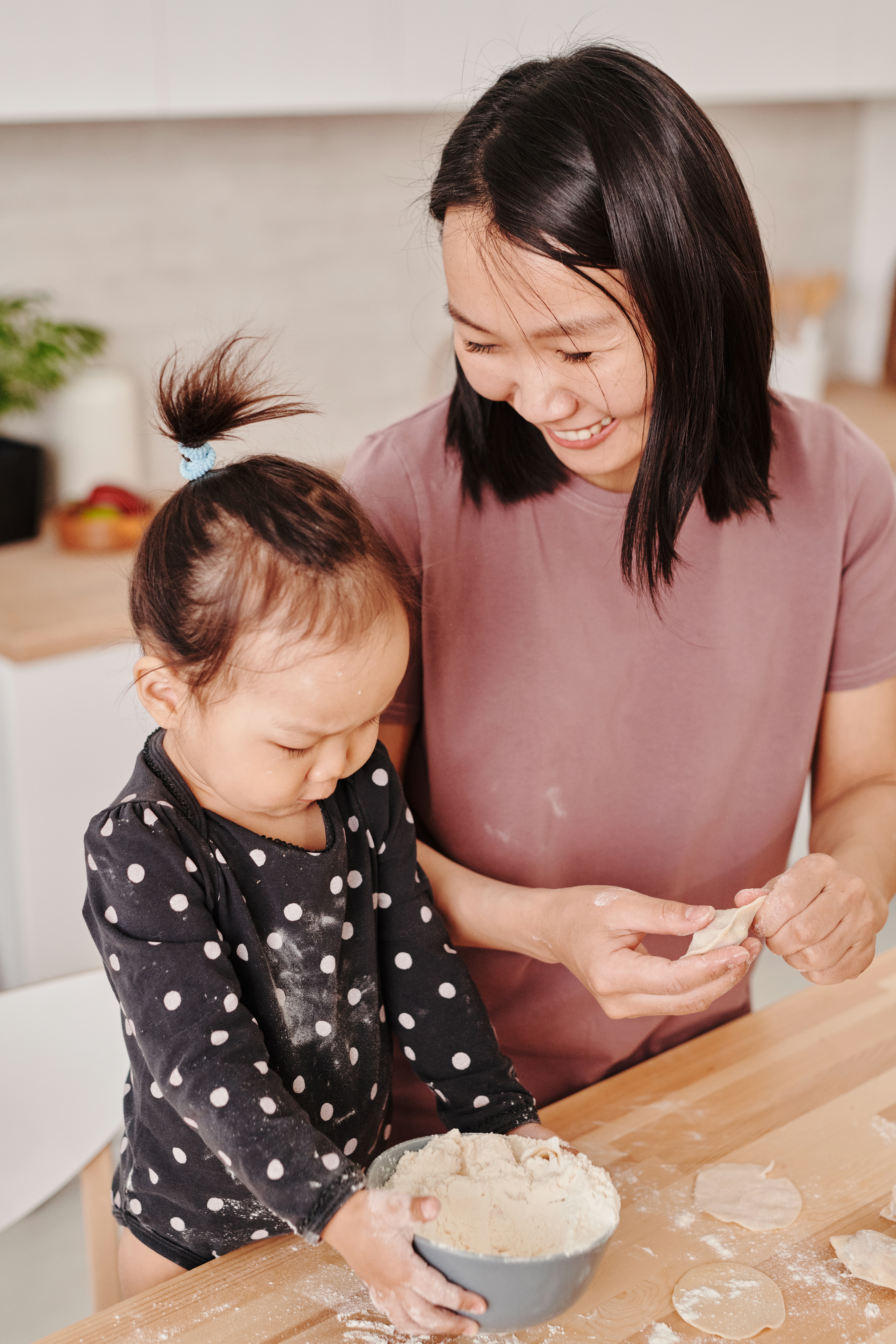
For example:
Using a child-sized pitcher and small drinking glass allows your child to pour water when she/he is thirsty, teaches her/him to exercise care using real dishes, and supports her growing autonomy in taking care of her/his needs.
THE BATHROOM
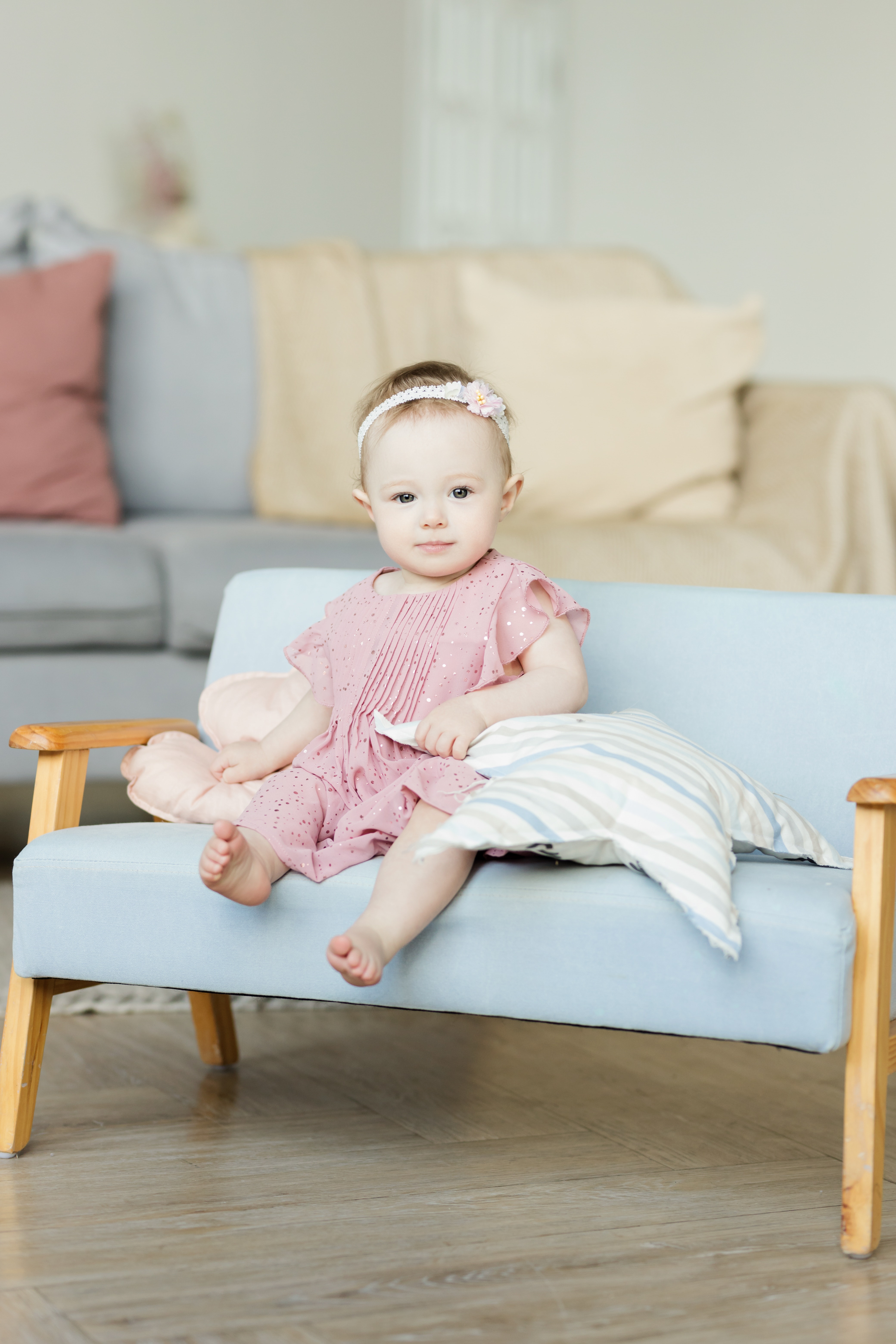
As children grow older, the home environment should grow with
them, with care given to supporting their independence in
accessing and caring for the space.
THE LIVING-ROOM
The key is including children in your family’s day-to-day activities at home – whether they are toddlers or teens – as an expectation from the very beginning.
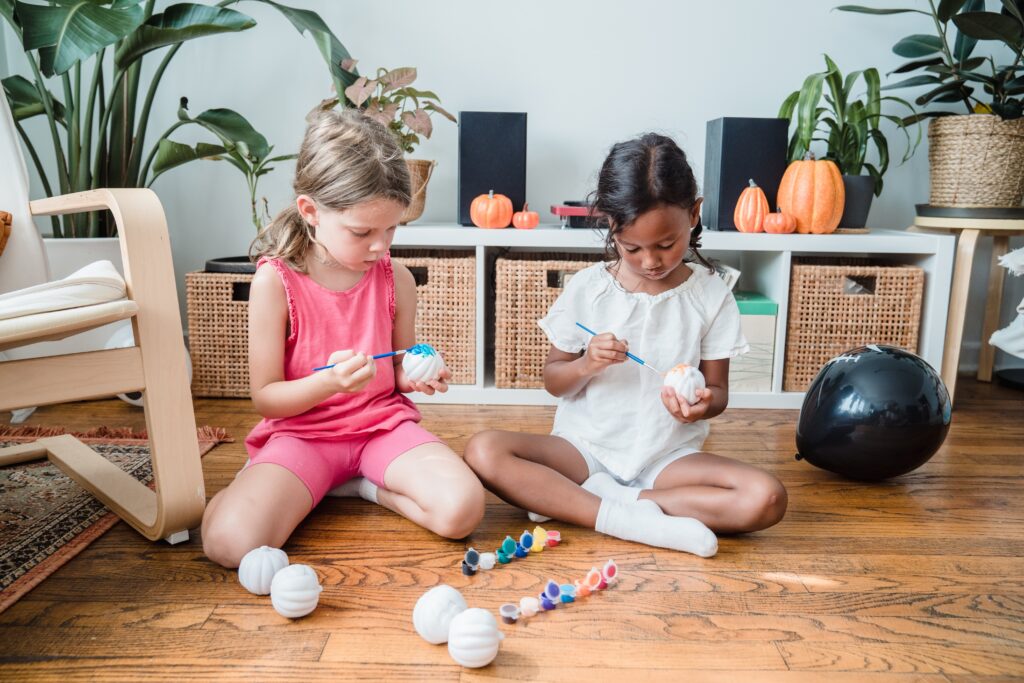
THE PREPARED ADULT
In the classroom, the teacher is the prepared adult but at home are the parents. What is your role in supporting the family’s Montessori practice at home?
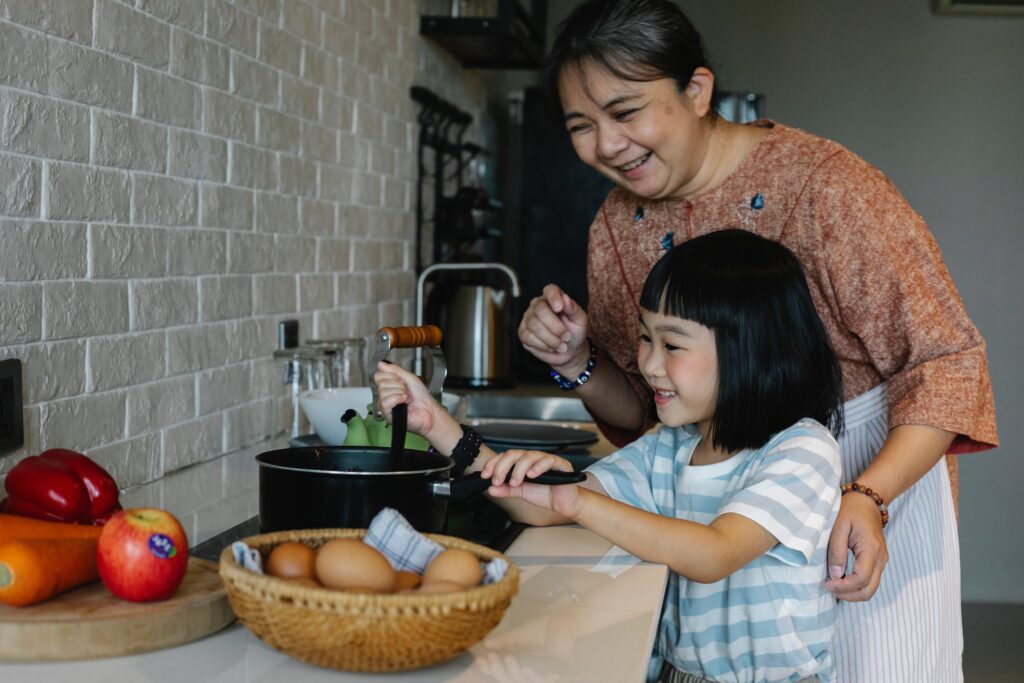
- Parents has to be dure that the enviroment characteristics at home are in place;
- Attract the child to the activity;
- Understand the needs of the child: Concentration/ freedom with clear rules/Autonomy;
- The guidance of the adult is essential;
- Do demonstrations: show how to do
- Importance of language: Linguistic vigilance;
- Need of love: be calm/ confident and protect;
- Be a ROLE MODEL.
OBSERVE
Take time to observe your child at home, without interfering in her activity.
Is she able to maintain a reasonable level of order? Are materials put away in their designated places? If not, you, as parent—like the Montessori teacher—should consider the child’s environment:
- Are there too many choices?
- Are the choices available no longer interesting or challenging?
- Is it difficult for your child to put items away properly?
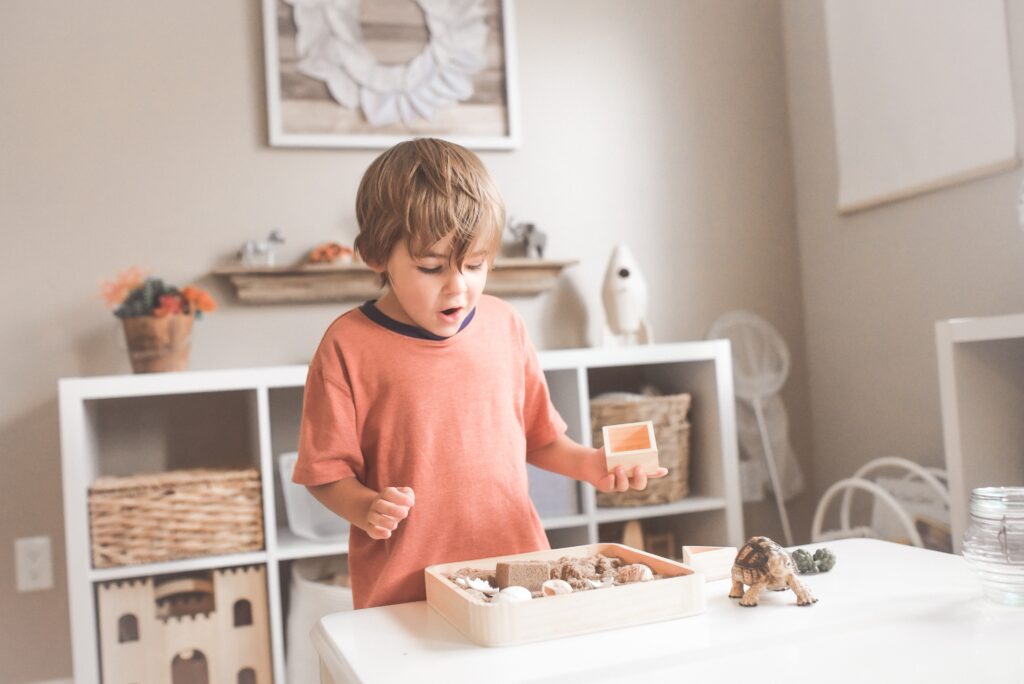
The ability to focus and concentrate is an important skill for learning. You can help develop your child’s concentration at any age by observing what sparks her/his interest and providing opportunities to pursue it. Set her/him up with the materials to explore what has piqued her/his interest, and let her/his work without interruption until she/he is ready to choose another activity.
MODEL, INVITE & PRACTICE
Modeling to successfully manage household tasks and providing assisted practice from the earliest ages will result in capable young ones, preteens, teenagers, and adults. For young children, rather than labeling shelf spaces to signal where items go, demonstrate to your child an object’s proper place and practice putting it away with her. You may need to demonstrate a new skill a few times, but soon your child will have memorized the routine and mastered it herself/himself —and she/he will take great pride in being able to do it on her/his own. Soon she/he will be independently doing the task herself/himself, and meaningfully contributing to the care of your family’s home!
Based on your observations, make changes to the environment to ensure your child’s success, interest, and independence.
PRACTICE REAL-LIFE SKILLS
Montessori students learn to take care of themselves and their classroom and to be helpful to others. They wash tables, organize shelves, prepare meals, and assist younger children. In addition to the satisfaction of mastering real-life skills, they come to see themselves as valued members of the community.
Creating an environment that encourages your child to help at home can bring similar rewards. Young children can peel vegetables, fold their clothes, match their socks, and care for pets.
NURNURE INNER MOTIVATION
Children are most willing to apply themselves when they feel there is intrinsic value to their work. Montessori is based on the belief that pride and pleasure in one’s own work have lasting and meaningful, effects that external incentives do not. In Montessori perspective, even praise is given sparingly—saved to acknowledge a child’s effort and encourage dedication and commitment to accomplishing a task, rather than the outcome of her/his work. By expressing encouragement and appreciation for your children’s efforts at home, you—like their teachers—will help nurture an inner motivation that will serve them for life.
Clicking here you can find a useful video about Montessori at Home.
Want to know more about this topic? Book a workshop appointment with Olivia!
